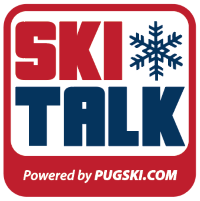@karlo, this is a classic rotary push off move. It's fairly common. Because you extend the old inside leg to move your mass across the skis, and because you are applying rotary before establishing the edge, your new outside ski starts rotating before the inside ski, resulting in a wedge in the initiation of the turn.It appears to me the wedge resulted from this, at exit of the previous turn,
View attachment 96813
View attachment 96814
I am untipping the old inside ski much earlier than my old outside ski, resulting in the new outside ski tipped onto edge much earlier than the new inside ski. Why I am doing that, what happened, I don't know. I don't think it appears in all turns. But, yeah, why did I, exiting the previous turn, untip so assymetrically? I don't know.
"At this point in that turn your left ski should be almost off the snow,"
I had been told that I have a habit of picking up my new inside ski when entering a turn. I was intentfully trying not to do that. So, perhaps I over did it? Still, I don't know why the above asymmetry.
So, as I said in the post above, a way to correct this is to think edge before rotary. This will actually have several effects: first, it will establish an edge that can accept the pressure of the forces in the turn resulting in the ski bending high in the turn, second, it may encourage you to move with the ski rather than dumping the body inside early, and third, it may slow your movements down so that the top of the turn is more similar to the bottom of the turn.
Mike
